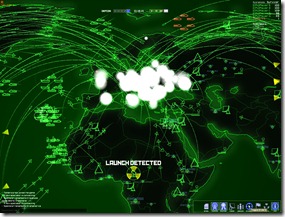Perimeter, again
 Wired has a very interesting article on the Russian “dead hand” fail-safe command system for nuclear retaliation, called “Perimeter”. We have discussed this system before, but the article reveals some new and highly intriguing information about the nature and purpose of the “dead hand”:
Wired has a very interesting article on the Russian “dead hand” fail-safe command system for nuclear retaliation, called “Perimeter”. We have discussed this system before, but the article reveals some new and highly intriguing information about the nature and purpose of the “dead hand”:
According to both Yarynich and Zheleznyakov, Perimeter was never meant as a traditional doomsday machine. The Soviets had taken game theory one step further than Kubrick, Szilard, and everyone else: They built a system to deter themselves.
By guaranteeing that Moscow could hit back, Perimeter was actually designed to keep an overeager Soviet military or civilian leader from launching prematurely during a crisis. The point, Zheleznyakov says, was "to cool down all these hotheads and extremists. No matter what was going to happen, there still would be revenge. Those who attack us will be punished."
And Perimeter bought the Soviets time. After the US installed deadly accurate Pershing II missiles on German bases in December 1983, Kremlin military planners assumed they would have only 10 to 15 minutes from the moment radar picked up an attack until impact. Given the paranoia of the era, it is not unimaginable that a malfunctioning radar, a flock of geese that looked like an incoming warhead, or a misinterpreted American war exercise could have triggered a catastrophe. Indeed, all these events actually occurred at some point. If they had happened at the same time, Armageddon might have ensued.
Perimeter solved that problem. If Soviet radar picked up an ominous but ambiguous signal, the leaders could turn on Perimeter and wait. If it turned out to be geese, they could relax and Perimeter would stand down. Confirming actual detonations on Soviet soil is far easier than confirming distant launches. "That is why we have the system," Yarynich says. "To avoid a tragic mistake. "
Most definitely a must-read for anyone interested in nuclear matters.
Comments
Leave a Reply
You must be logged in to post a comment.





